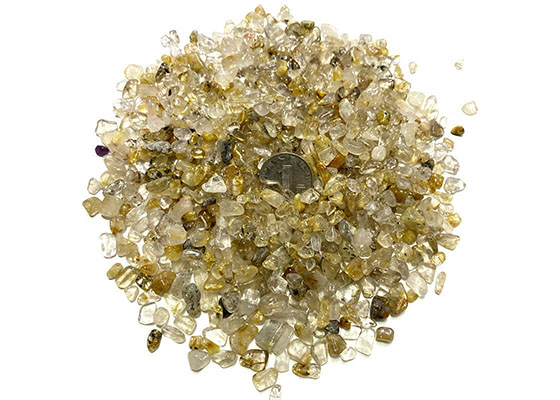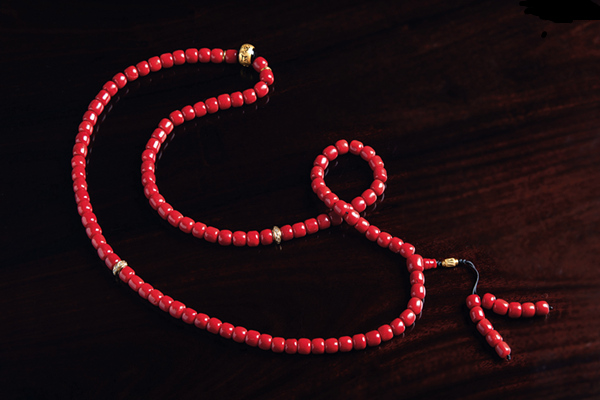Gemstones have always fascinated humans with their beauty, symbolism, and spiritual properties. Two such gemstones that are often confused for each other are tourmalinated quartz and rutilated quartz. Both of these stones feature needle-like inclusions that run through their crystal structures, giving them a unique and striking appearance. However, despite these similarities, tourmalinated quartz and rutilated quartz are distinct gemstones that differ in many ways. In this blog post, we’ll explore the differences between these two stones, their properties, uses, and symbolism.
Formation and Composition
Before we dive into the differences between tourmalinated quartz and rutilated quartz, let’s first take a look at how they are formed and what they are made of.
Tourmalinated Quartz
Tourmalinated quartz is a type of quartz that contains black or dark green tourmaline inclusions. Tourmaline is a boron silicate mineral that is known for its unique crystal structure and a wide range of colors. Tourmalinated quartz forms when tourmaline crystals are trapped inside quartz during its formation. These inclusions create black or green threads or needles that run through the transparent or translucent quartz crystal, giving it a striking appearance.
Rutilated Quartz
Rutilated quartz is a variety of quartz that contains inclusions of golden or reddish-brown rutile. Rutile is a titanium oxide mineral that forms in long, thin, needle-like crystals. Rutilated quartz forms when rutile crystals become trapped in quartz during its formation. These inclusions create golden or reddish-brown threads or needles that run through the transparent or translucent quartz crystal, giving it a unique and eye-catching appearance.
In terms of composition, tourmalinated quartz is primarily made up of silicon dioxide (SiO2), the same mineral that makes up pure quartz. The tourmaline inclusions make up only a small percentage of the stone. Rutilated quartz, on the other hand, is made up of both silicon dioxide and rutile, with the rutile inclusions comprising a significant portion of the stone.
Appearance and Color
While both tourmalinated quartz and rutilated quartz feature needle-like inclusions that run through their crystals, they differ in appearance and color.
Tourmalinated Quartz
Tourmalinated quartz typically has black or dark green tourmaline inclusions that form thread-like or needle-like patterns throughout the crystal. The tourmaline inclusions can vary in thickness and can be sparse or dense. The quartz crystal itself is usually clear or translucent, with a glassy or waxy luster.
Rutilated Quartz
Rutilated quartz, as its name suggests, contains golden or reddish-brown rutile inclusions that form needle-like or thread-like patterns throughout the crystal. The rutile inclusions can vary in thickness and density, and they can create a range of interesting patterns, including starbursts, fans, and swirls. The quartz crystal itself is typically clear or translucent, with a glassy or waxy luster.
In terms of color, tourmalinated quartz is primarily black or dark green, while rutilated quartz is primarily golden or reddish-brown.
Symbolism and Meaning
Both tourmalinated quartz and rutilated quartz have spiritual and healing properties that have been recognized by many cultures throughout history.
Tourmalinated Quartz
Tourmalinated quartz is said to combine the properties of both quartz and tourmaline, making it a powerful stone for protection, grounding, and spiritual growth. The black tourmaline inclusions are believed to absorb negative energy and protect against electromagnetic radiation, while the quartz crystal is said to amplify energy and facilitate communication with higher realms.
Rutilated Quartz
Rutilated quartz is also a powerful stone with spiritual and healing properties. The golden or reddish-brown rutile inclusions are believed to enhance intuition, creativity, and manifestation, while the quartz crystal is said to amplify energy and provide clarity and focus. Rutilated quartz is also associated with the solar plexus and crown chakras, making it a stone for personal empowerment, spiritual growth, and connection to higher realms.
Uses and Applications
Both tourmalinated quartz and rutilated quartz have a variety of uses and applications in jewelry, meditation, and healing practices.
Tourmalinated Quartz
Tourmalinated quartz is often used in jewelry as a statement piece, due to its unique and eye-catching appearance. It is also used in meditation and energy healing practices for protection, grounding, and spiritual growth. Placing tourmalinated quartz in your home or office is believed to absorb negative energy and provide a calm and clear environment.
Rutilated Quartz
Rutilated quartz is also used in jewelry, particularly in pendants and earrings, as well as in meditation and energy healing practices. Its golden or reddish-brown inclusions make it a popular stone for enhancing creativity, manifestation, and personal empowerment. Rutilated quartz can also be used to balance and energize the chakras, particularly the solar plexus and crown chakras.
Conclusion
In summary, tourmalinated quartz and rutilated quartz may have some similarities due to their needle-like inclusions, but they are distinct gemstones with different properties, uses, and symbolism. Tourmalinated quartz contains black or dark green tourmaline inclusions and is primarily used for protection, grounding, and spiritual growth. Rutilated quartz contains golden or reddish-brown rutile inclusions and is primarily used for enhancing creativity, manifestation, and personal empowerment. Both of these gemstones are beautiful and powerful, making them great additions to any gemstone collection or spiritual practice.



